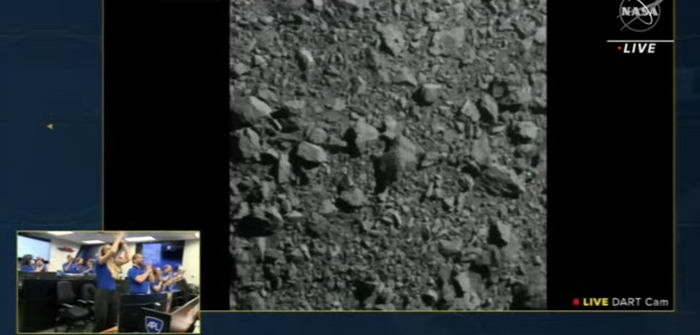The first images
of the point where the asteroid Dimorphos was hit in the night by the Dart probe in the planetary defense test
have arrived from the Italian minisatellite LiciaCube .
The images are
being processed
and will be
visible within the day
.
"We downloaded 4 images, all very interesting. The enthusiasm is skyrocketing", Simone Pirrotta, head of the LiciaCube mission for the Italian Space Agency (ASI), told ANSA.
Managed and coordinated by ASI and built by the Argotec company, LiciaCube is the first all-Italian mission active in deep space, 13 million kilometers from Earth.
The acquisition of the images "is the most important return expected from our mission," said Pirrotta, who is following the mission from the Control Center in Turin.
It is in fact "the clear sign that the trajectory was almost exactly as expected, that the aiming system worked well and that the cameras acquired the expected photos", she added.
"It is also the result of the work of a beautiful team: for five years we have heard from each other almost every day", he observed referring to the working group that participated in the Italian mission and of which, with Asi and Argotec, the National Institute belong of Astrophysics, Polytechnic of Milan, University of Bologna, Parthenope University of Naples and 'Nello Carrara' Institute of Applied Physics
Impact NASA's
Dart
probe
hit the asteroid
Dimorphos
to divert its trajectory: thus,
13 million kilometers from Earth
, a technology was tested that could in the future
protect our planet
from the possible impact of a
threatening
asteroid .
Like a cosmic photojournalist, the Italian minisatellite
LiciaCube will
collect the first data on the event.
As the Dart (Double Asteroid Redirection Test) probe approached its target, its camera sent more and more detailed images to Earth of the irregular and rugged surface of the small celestial body, 13 million kilometers away from Earth.
With each close-up image, the emotion increased in the NASA Control Center, up to the huge applause that greeted the impact.
Montage of the images of the asteroid Dimorphos during the approach of the Dart probe, before impact (source: NASA / JHUAPL)
At that moment the small
LiciaCube satellite
, managed and coordinated by the Italian Space Agency (ASI) and built by the Argotec company, was located less than a thousand kilometers from the asteroid and immediately after the collision entered the scene as a cosmic photojournalist to film the point where it occurred the impact.
It was "a spectacular impact!", Simone Pirrotta, head of the LiciaCube mission for ASI, who followed the mission from the Turin Control Center, told ANSA.
"The SmartNav pointing technology of the Dart probe worked perfectly. Here in Turin we have followed with emotion the end of the NASA mission, with the awareness that in the meantime our little reporter was documenting a historical moment:
"In the 4 minutes before the impact, Liciacube started tracking the asteroid guided no longer by the pre-loaded trajectories on board, but by the Imaging System, the steering and attitude control system based on real-time images", he Pirrotta added.
The first window of communication with the Earth is scheduled for 2:15: "in the first hour the status of the satellite will be checked and the record of what has happened. Subsequently - said the expert - the images will begin to download".
A new season
begins It is the beginning of a new season of missions dedicated to planetary defense: after Dart, in 2024 the European Space Agency (ESA) plans to launch Hera, the mission that will have to examine and measure the crater left by the impact of Dart and collect data on the composition and mass of the asteroid.
With Dart and LiciaCube, Hera is part of the international collaboration Aida (Asteroid Impact and Deflection Assessment), which will bring together the data collected in the three missions.
Graphic representation of the asteroid Dimorphos, with a diameter of 160 meters, in comparison with the Colosseum (source: ESA-Science Office)
The system formed by the asteroid Didymos, around which another asteroid, Dimorphos rotates (source: ESA)
Simulation of the jet of dust produced by the impact of the Dart probe on the asteroid Dimorphos (source: ESA)
The NASA direct
Live from the Virtual Telescope












